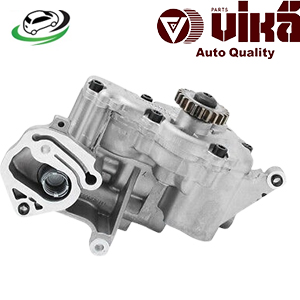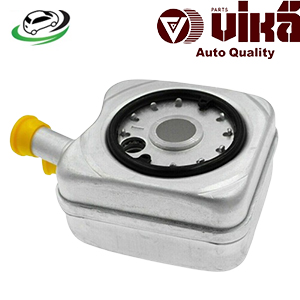-2%
Get AUDI 8V S3/ A3 8V/ B9 A4/ B9 A5/ B9 Q5/ C7 A6/ TTS / VW Tiguan MQB/ Passat B7/ Golf VII R/ Golf VII/ Atlas/ Alltrack Thermostat/Water Pump Kit 06L121111H
A thermostat/water pump kit is a combined assembly typically used in vehicle cooling systems to regulate engine temperature and circulate coolant. The thermostat is a temperature-sensitive valve that opens and closes to control coolant flow based on engine temperature, while the water pump circulates the coolant throughout the engine and radiator.
These kits are designed for specific vehicle makes and models, ensuring proper fitment and compatibility. They often include both the thermostat and the water pump, along with gaskets and seals, making installation easier and more efficient.
2. Functions of the Thermostat
The thermostat plays a crucial role in maintaining the engine’s operating temperature. Here are its primary functions:
2.1. Temperature Regulation
The thermostat monitors the engine’s temperature and opens or closes based on that temperature. When the engine is cold, the thermostat remains closed, preventing coolant from flowing to the radiator. This allows the engine to warm up quickly to its optimal operating temperature.
2.2. Maintaining Optimal Engine Temperature
Once the engine reaches a certain temperature (typically around 195-220°F or 90-104°C), the thermostat opens, allowing coolant to flow into the radiator. This ensures that the engine does not overheat and maintains an optimal temperature for efficient operation.
2.3. Preventing Engine Overheating
By regulating the flow of coolant, the thermostat helps prevent the engine from overheating. If the engine runs too hot, it can lead to severe damage, including warped cylinder heads, blown head gaskets, or complete engine failure.
3. Functions of the Water Pump
The water pump is responsible for circulating coolant throughout the engine and the cooling system. Here are its primary functions:
3.1. Coolant Circulation
The water pump draws coolant from the radiator and pushes it through the engine block and cylinder head, absorbing heat generated by the engine. The heated coolant then returns to the radiator to be cooled before being recirculated.
3.2. Maintaining Coolant Flow
The water pump maintains a constant flow of coolant, ensuring that heat is effectively dissipated from the engine. This is vital for preventing hot spots and ensuring even temperature distribution throughout the engine.
3.3. Supporting Engine Performance
By maintaining proper coolant circulation, the water pump helps the engine operate efficiently. An effective cooling system contributes to optimal engine performance, fuel efficiency, and reduced emissions.
4. Benefits of a Thermostat/Water Pump Kit
Using a thermostat/water pump kit provides numerous advantages, including:
4.1. Simplified Installation
A combined kit typically includes both the thermostat and water pump, along with necessary gaskets and seals. This simplifies the installation process, reducing the time and effort required for repairs or replacements.
4.2. Enhanced Reliability
By purchasing a complete kit, you ensure that both components are designed to work together effectively. This reduces the likelihood of future cooling system issues caused by mismatched parts or worn-out components.
4.3. Improved Cooling Efficiency
A properly functioning thermostat and water pump work together to maintain optimal engine temperature. This prevents overheating and contributes to better overall engine performance, fuel efficiency, and longevity.
4.4. Cost-Effectiveness
Purchasing a kit is often more cost-effective than buying individual components separately. It can save both time and money on installation and labor costs.
4.5. Reduced Risk of Failure
Replacing both the thermostat and water pump simultaneously reduces the risk of future failures. If one component is worn or damaged, the other is likely to be as well. Replacing them together can help ensure a more reliable cooling system.
5. Common Issues with Thermostat/Water Pump Kits
While thermostat/water pump kits are designed to be reliable, issues can arise. Common problems include:
5.1. Thermostat Sticking
A thermostat may become stuck in the closed position, preventing coolant flow. This can lead to engine overheating, as the engine cannot dissipate heat. Signs of a stuck thermostat include an overheating engine and fluctuating temperature gauge readings.
5.2. Water Pump Failure
Water pumps can fail due to wear and tear, leakage, or bearing failure. A failing water pump may result in inadequate coolant circulation, leading to overheating. Signs of water pump failure include coolant leaks, unusual noises (like whining or grinding), and an overheating engine.
5.3. Coolant Leaks
Gaskets and seals included in the kit can deteriorate over time, leading to coolant leaks. If coolant leaks from the water pump or thermostat housing, it can result in low coolant levels, increasing the risk of overheating.
5.4. Air Trapped in the Cooling System
Air trapped in the cooling system can cause coolant flow issues and lead to overheating. Proper bleeding of the system is essential after installation or coolant replacement to ensure there are no air pockets.
6. Maintenance Tips for Thermostat/Water Pump Kits
Regular maintenance can help extend the life of your thermostat/water pump kit and prevent issues:
6.1. Regular Coolant Changes
Changing the coolant according to the manufacturer’s recommended schedule is crucial. Fresh coolant helps prevent corrosion and buildup of debris in the cooling system, promoting optimal performance.
6.2. Inspect for Leaks
Regularly check for coolant leaks around the thermostat and water pump. Addressing any leaks promptly can prevent overheating and other cooling system issues.
6.3. Monitor Engine Temperature
Keep an eye on the engine temperature gauge. If you notice fluctuations or the engine running hotter than normal, investigate the cooling system, including the thermostat and water pump.
6.4. Replace When Necessary
If you experience signs of thermostat or water pump failure, such as overheating, leaks, or unusual noises, replace the components immediately. Waiting can lead to more severe engine damage.
6.5. Check Drive Belts
The water pump is typically driven by a belt. Regularly inspect the drive belt for signs of wear or damage, and replace it as needed to ensure proper water pump operation.
6.6. Bleed the Cooling System
When performing maintenance or repairs, ensure that the cooling system is properly bled to remove any trapped air. This will help maintain optimal coolant flow and temperature regulation.
7. Conclusion
The thermostat and water pump are essential components of a vehicle’s cooling system, working together to regulate engine temperature, circulate coolant, and prevent overheating. A thermostat/water pump kit simplifies installation and enhances reliability by ensuring compatibility between the two components.
Understanding the functions, benefits, common issues, and maintenance tips related to the thermostat/water pump kit is crucial for vehicle owners. Regular maintenance and prompt replacement of worn components will contribute to a well-functioning cooling system, optimizing engine performance and longevity. By keeping the engine cool and operating efficiently, drivers can enjoy a smoother and more reliable driving experience.
Follow us on Facebook for more parts.




Reviews
Clear filtersThere are no reviews yet.